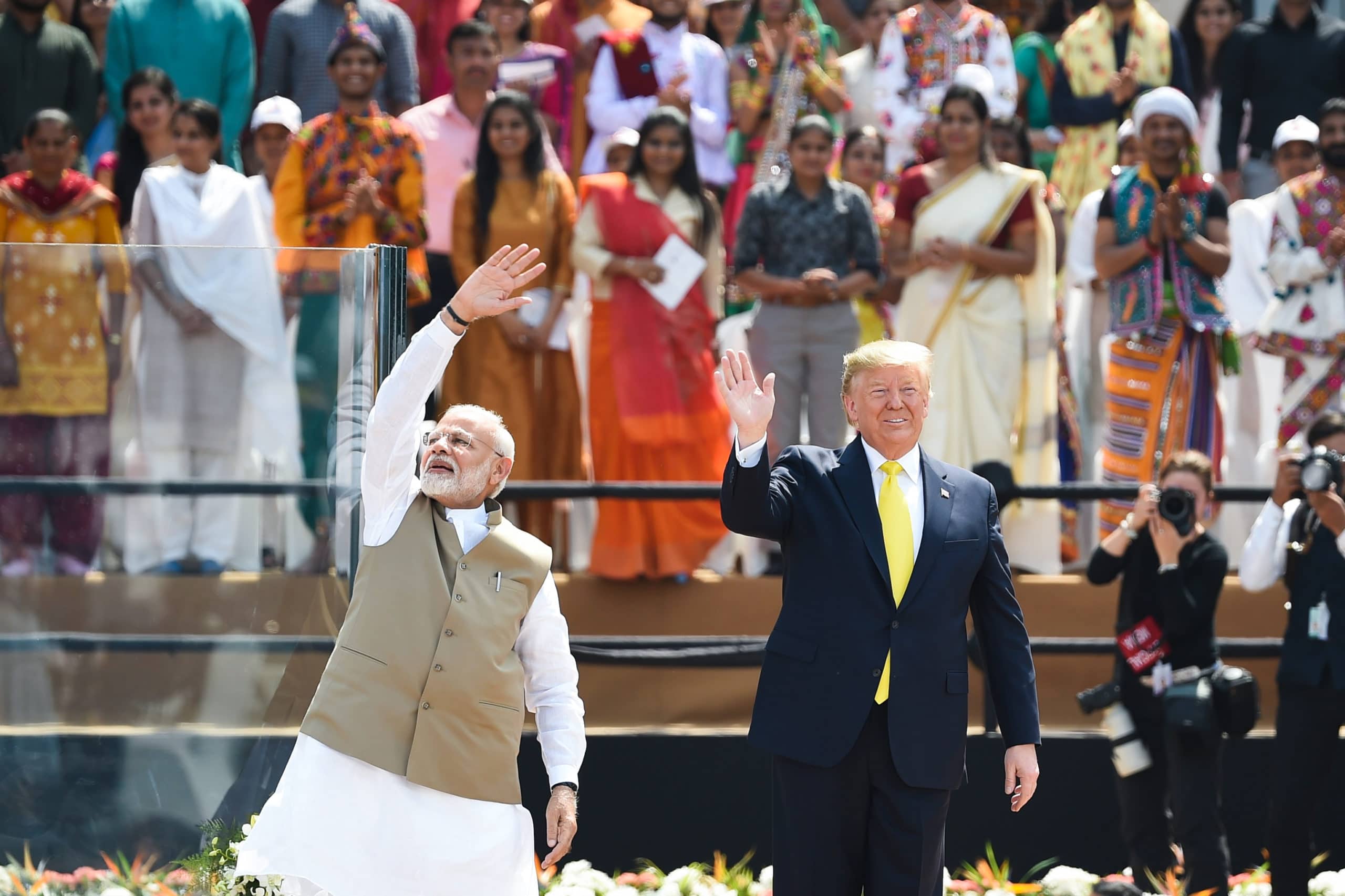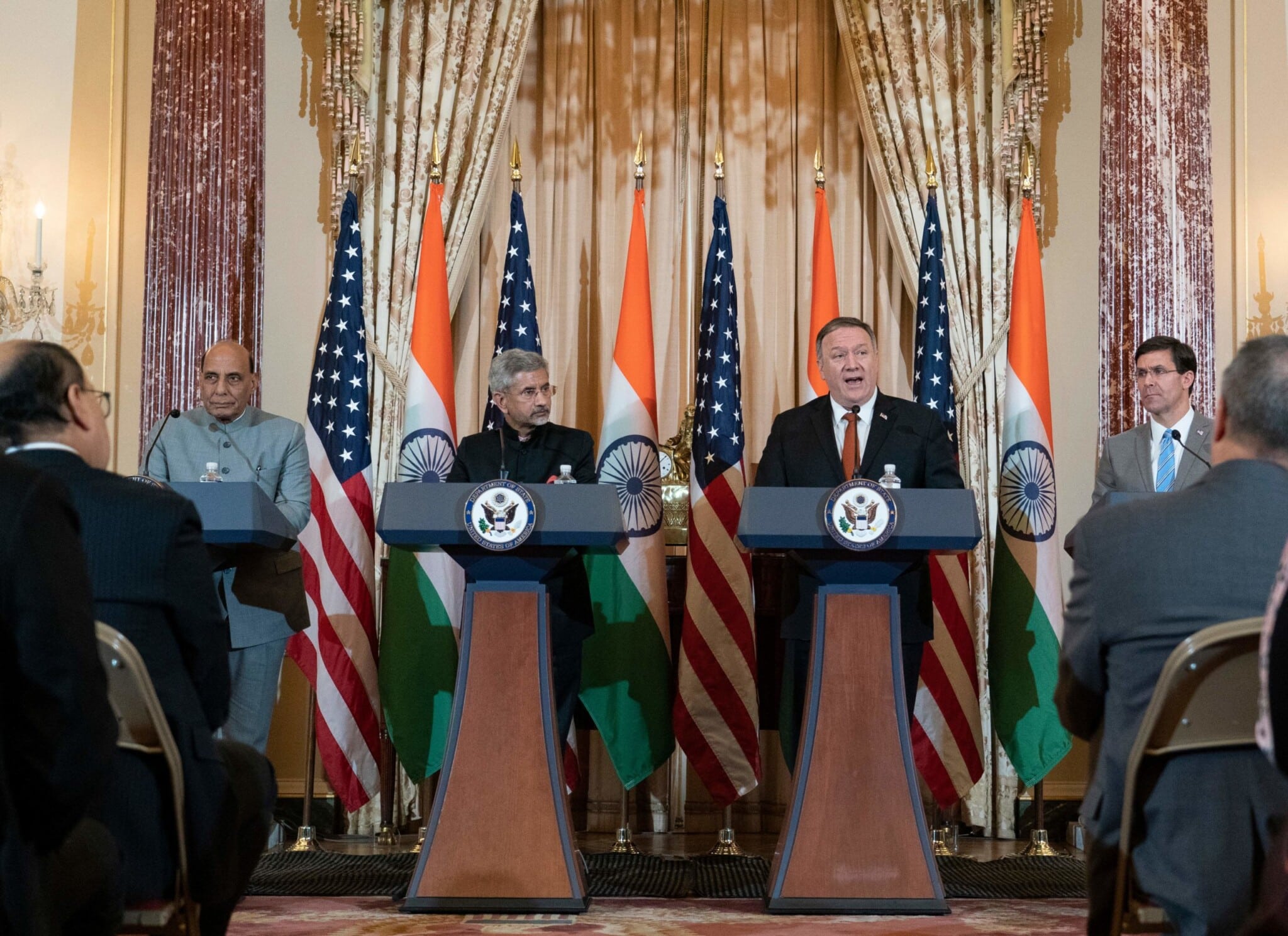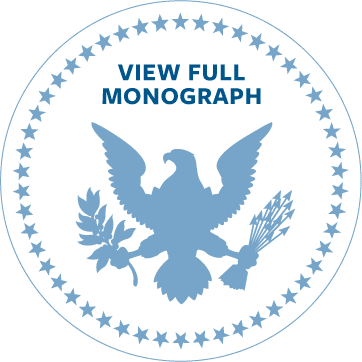January 14, 2021 | From Trump to Biden Monograph
India
January 14, 2021 | From Trump to Biden Monograph
India
Current Policy
For decades, U.S. policy has focused on India in relation to other countries, not on India itself. In that context, India was often “hyphenated” – first as part of the India-Pakistan conflict and then in terms of India-China relations. Under the Trump administration, U.S. policy remained hyphenated, but India (under the term “Indo”) was finally recognized for its anchoring role in a region of significant strategic importance: the Indo-Pacific. India was thus recognized as an important partner in countering the rise of China amidst the new great power competition currently escalating between Washington and Beijing.
In November 2017, President Trump delivered an address at the Asia-Pacific Economic Cooperation summit in Vietnam in which he described his vision for a “free and open Indo-Pacific.” This new label quickly replaced references to the Pacific or Asia-Pacific region.1 In May 2018, the Department of Defense changed the name of U.S. Pacific Command to U.S. Indo-Pacific Command,2 and in November 2019, the Department of State published a new report titled “A Free and Open Indo-Pacific: Advancing a Shared Vision.”3
Along with this change in terminology, the administration sought to elevate India’s status as a U.S. partner. In its December 2017 National Security Strategy, the administration stated, “We will expand our defense and security cooperation with India, a Major Defense Partner of the United States, and support India’s growing relationships throughout the region.”4 In September 2018, Washington and New Delhi established the U.S.-India 2+2 Ministerial Dialogue for top-level foreign and defense ministry officials.
The two governments also signed several important agreements, most notably the Communications, Compatibility and Security Agreement in 2018, allowing for deeper and faster defense interoperability and information sharing. In 2020, the two countries signed the Basic Exchange and Cooperation Agreement, allowing for the sharing of real-time satellite imagery.5 The United States and India have now signed the four foundational defense agreements necessary for much deeper integration and interoperability.
Additionally, in 2019, the United States and India held their first tri-service exercise, Tiger Triumph.6 India also agreed to purchase billions of dollars’ worth of military equipment, including drones and Apache and Seahawk helicopters.7 Following India’s June 2020 border conflict with China, Delhi’s defense requirements have increased, and the Pentagon has been attentive and adaptable.
The Free and Open Indo-Pacific construct also calls for broader values-based partnerships across the Indian and Pacific oceans. In that context, the Trump administration worked on building the U.S.-India-Japan relationship, in part through the annual India-hosted trilateral Malabar naval exercises as well as the first U.S.-India-Japan trilateral leaders meeting in November 2018 at the G20.
The Trump administration also encouraged the revival of the Quadrilateral Security Dialogue (or Quad) involving the United States, India, Japan, and Australia, with the four foreign ministers meeting for the first time in September 2019 and again – in person despite COVID-19 – in Tokyo in October 2020.8 The India-Australia link had been the weak link within the Quad; however, that relationship seems to be growing stronger, with India inviting Australia to join MALABAR in 2020. The two countries also signed a mutual defense logistics agreement in 2020.9
Most visibly, Trump and his Indian counterpart, Narendra Modi, traded visits, with each leader appealing to the other’s voters. Modi joined Trump and a crowd of over 50,000 for the “Howdy Modi!” event in Texas in September 2019.10 The next February, Trump addressed a crowd of 110,000 in Gujarat,11 after which Trump and Modi announced an upgraded U.S.-India Comprehensive Global Strategic Partnership.12

President Trump and Indian Prime Minister Narendra Modi wave at the crowd during the February 2020 “Namaste Trump” rally on the outskirts of Ahmedabad, India. (Photo by Money Sharma/AFP via Getty Images)
While Trump himself offered to “mediate” on Kashmir, the administration largely stayed quiet on issues India deems internal. The administration also backed India following China’s border incursions starting last May.13
On trade, there was scant progress toward a deal with India despite the two sides’ clear interest. Occasionally, Trump railed against “tariff king” India.14 However, business-to-business relationships were strong and, in 2019 and 2020, the United States was India’s top trading partner, importing $58 billion of Indian goods in 2019 and exporting $34 billion.15
Assessment
The U.S.-India relationship made major advances on the diplomatic and security fronts, owing in part to mutual concerns about China, yet bilateral efforts to bring down trade barriers proved lackluster at best.
Even while campaigning in 2016, the Trump team recognized both the importance of the Indo-American community and the appeal of Modi. The campaign released an ad in which Trump says, in English, “The Indian and Hindu community will have a true friend in the White House.” Trump spoke Hindi in the ad, adapting a catchphrase Modi used in his successful 2014 campaign: Ab ki baar, Trump sarkar – loosely, “Time for a Trump government.”16 While the majority of Indo-Americans still voted Democratic, Trump made strong inroads domestically and electrified Modi supporters in India.
The administration successfully strengthened the bilateral relationship, especially on strategic issues. In July, Secretary of State Pompeo said, “The United States has never been more supportive of India’s security.” He added that the United States desires “a new age of ambition in our relationship” with India, and that “India is one of a few trusted, like-minded countries whose leaders I call on a regular basis for counsel and collaboration, on issues that span continents.”17 A week before the November 2020 U.S. elections, both Pompeo and the secretary of defense visited India for another 2+2.

Indian Foreign Minister Subrahmanyam Jaishankar and Secretary of State Mike Pompeo participate in a press conference at the State Department in Washington, DC, on December 18, 2019. (Photo by Alex Edelman/AFP via Getty Images)
Admittedly, there were some frictions in the bilateral relationship, which tended to involve U.S. dealings with third parties of concern to India. In particular, Trump’s plans to abandon both Washington’s Syrian Kurdish partners and the pro-U.S. government in Afghanistan shook Indian faith in the United States as a trusted long-term partner, sowing doubts that anti-U.S. alliance lobbies in New Delhi used to full advantage. The return of U.S. sanctions on Iran also caused consternation because they forced Indian buyers to stop importing Iranian oil and risked aggravating the delicate New Delhi-Tehran relationship, which India deems necessary for fear of domestic Shiite terror cells.
While bilateral relations deepened across the defense sector, some in India, even those with pro-U.S. leanings, perceived the defense outreach as a transactional effort to benefit U.S. firms rather than Indian security. However, as critically needed U.S. weaponry arrives in India and information sharing increases, that position is softening.
While the Chinese border incursions largely silenced overt pro-Beijing lobbies in India, the pro-Moscow lobby (which often works in tandem with Beijing) continued to enjoy substantial influence. The most notable example is India’s ongoing determination to purchase Russia’s S-400 advanced surface-to-air missile system, which gathers intelligence and, if put into operation, would embed Russian advisers in the Indian defense arena for decades. This could both trigger sanctions under U.S. law (the Countering America’s Adversaries Through Sanctions Act) as well as preclude India from gaining access to some high-tech U.S. equipment, including the F-35 stealth fighter. This would undoubtedly please Moscow and Beijing.
On trade, the main obstacles to a bilateral agreement revolved around access for agricultural products, medical equipment, and pharmaceuticals and India’s data localization regulations, to name a few. There was also confusion surrounding the Trump administration’s changing position on H1-B visas, though border closures due to COVID-19 made this issue less urgent.
Overall, while significant progress was made in strengthening U.S.-India ties, the partnership is still vulnerable in places, and there are a range of actors, namely China and Russia, who actively seek to undermine that progress.
Recommendations
Pre-election statements by President-elect Biden and Vice President-elect Kamala Harris led New Delhi to worry that a Biden White House would involve itself in issues India considers internal, such as Kashmir.18 More recently, however, the incoming administration’s focus seems to be shifting to India’s potential international role, including in the Indo-Pacific. This builds on Biden’s contention that the growth of U.S.-India strategic relations really started under President Obama. During Biden’s first post-election phone call with Modi, the president-elect expressed his desire to “strengthen and expand the U.S.-India strategic partnership” while maintaining a “secure and prosperous Indo-Pacific region.” The incoming administration thus has a prime opportunity to deepen, accelerate, and strengthen what is already working.19
- Continue defense sales and cooperation. To rapidly increase India’s capacity to defend itself and act as an effective partner in the Indo-Pacific, the Biden administration should pursue additional weapons sales to India and identify surplus U.S. military equipment and platforms that New Delhi can acquire at low cost or even for free, as occurred with the USS Trenton in 2006.20 This will show that the U.S.-India relationship is more than transactional.
- To bolster Indian opponents of buying Russian weapons, impose sanctions on all foreign buyers of prohibited Russian military hardware. The Trump administration hesitated to impose sanctions on Turkey for purchasing the S-400 but eventually did so in December 2020. The United States should be equally firm with all others, such as Qatar and Saudi Arabia, now considering an S-400 purchase. The prohibition and consequences must be clear to India.
- Work to formalize the Quad, ideally expanding it to include economic and trade components. Washington could join, or at least not impede, the Supply Chain Resilience Initiative, which currently consists of India, Japan, and Australia.
- Support Delhi should it desire to establish Quad operational bases in the Andaman and Nicobar Islands and, ideally, in U.S. territories (possibly Guam), Australia, and Japan, too. This could dovetail with the U.S. secretary of the navy’s call to establish a numbered fleet (the 1st Fleet) in the Indo-Pacific.21
- Continue the policy of publicly backing India against terrorist and Chinese aggression. The incoming administration should exhibit restraint with public comments about issues India considers domestic, unless they involve specific, incontrovertible cases of human rights abuses.
- Deepen existing cooperation on counterterrorism and intelligence sharing with Indian counterparts on issues that can affect strategic decision making. For example, the United States and India should cooperate to combat transnational corruption, such as market manipulation that undermines the Indian economy, and foreign influence operations targeting key Indian leaders.
- Facilitate trade policies that allow India to become a supply chain alternative to China in sectors in which onshoring to the United States is not viable. This includes not impeding Indian economic engagement with third countries, which often has the advantage of cutting out Beijing. For example, Washington should not push for trade barriers that block low-cost Indian pharmaceuticals from markets in Asia and Africa.
- Support India’s lead on diplomatic initiatives of mutual benefit. For example, some in the Indian strategic community are proposing an Indo-Pacific Charter – a version of the Atlantic Charter of 1941 incorporating 21st-century concerns – that would provide a cooperation and coordination framework for like-minded countries on issues such as governance of space, data, and protection of democracies.
